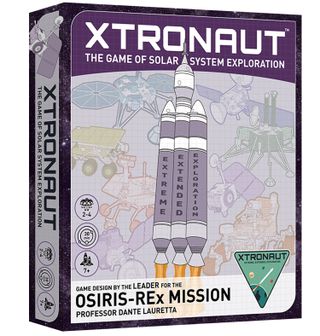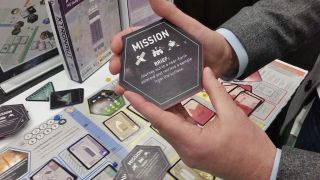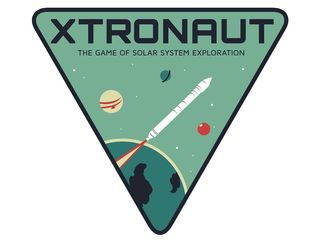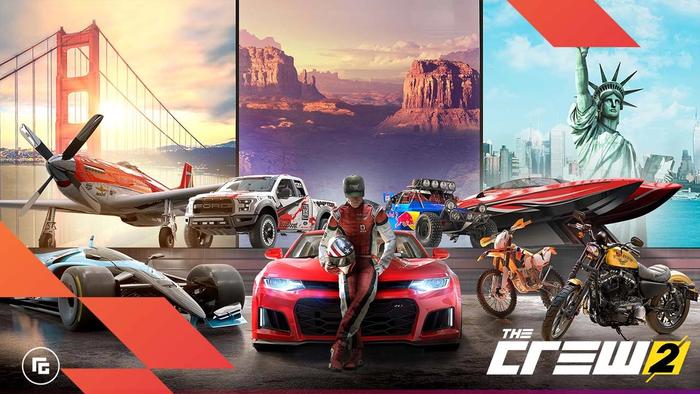NEW YORK – New game, created by a NASA mission scientist, empowers gamers to take on the real-world challenges and opportunities of developing a space program: fighting budget cuts, competing projects and even shutdown government to launch research vessels into the solar system.
Dante Lauretta is the principal investigator of the first American mission to bring back samples of asteroids to Earth, called OSIRIS-REx. As he prepared for the mission to asteroid Bennu, which is now slated to launch in September, he was also inspired to work on something else: a game where players compete against each other to develop and execute space missions, called Xtronaut.
“What Xtronaut is doing is capturing – for two to four players – the real competitive nature of the spaceflight industry,” Lauretta told Space.com here at the Toy Fair on Monday (February 15). “We had to beat other teams to get our mission selected by NASA; even after that there is still a lot of work for resources and things going on.” [These Are the Space Missions to Watch in 2016]
In the game, each player is responsible for a real-world launch complex and competes to launch science missions. Every mission has certain requirements and challenges; for example, a bigger spaceship will bring in more science data (and therefore more points for the player, who is trying to hit 10), but it will require more power to launch and will be more difficult to build.
Players shoot maps corresponding to specific real-world rockets – United Launch Alliance’s Atlas and Delta rockets, SpaceX’s Falcon, and NASA’s upcoming space launch system – as well as other maps that can help and hinder missions. Gravity aids can help rockets gain speed, for example. (For added realism, the Falcon 9 stage 1 rocket card is reusable and returns to the player’s hand after launch.)
There is also a stage where players can swap components with each other and action cards that can delay another’s mission or boost their own in development.
“The action cards are where the real world comes into play,” Lauretta said. “There are two categories of action cards: one that allows you to outsmart your opponents like having their mission canceled, declaring a higher national priority and stealing one of their game board components, subjecting them to a financial audit.” , make them wait one And then there are some who can help you: a budget surplus allows you to draw two, the recovery allows you to go to the discard pile and remove a component from it, and the “pieces of spare ”allow you to draw four. “
Lauretta and Xtronaut CEO and co-founder Michael Lyon showcased the game on crowdfunding site Kickstarter, where the team raised $ 36,873 to produce and test the game. From the Kickstarter campaign, they also raised recruited two collaborators: the graphics and design team Ben Shulman and Ian Zang. Shulman designed the game’s design, similar to a blueprint, and Zang helped fine-tune the gameplay, such as adding the business segment and reducing adversarial actions.
“A lot of action cards had what’s called a ‘take this’ aspect,” Zang told Space.com. “Dante is a rocket scientist, and he based a lot of action cards on his actual experiences in the industry.” But to make the game more interactive, he encouraged scaling down the game and adding more interactive moments, where players swap components or choose what to do with their cards.
The game is available to order online, although the team is still looking for a larger-scale distributor. They have developed a companion workbook that uses play to teach children about space missions, which is already in use in some boys ‘and girls’ clubs. But for young and old, Lauretta says the game is meant to entertain and educate.
The most common positive feedback he hears is about “reality: real rockets, real performance, real missions, real math,” he said. “There is no right and wrong, it’s about exploring. [The goal is] to have something that has science, rockets, and education – and people, I hope, will want to play it just because it’s a really fun game to sit down and spend the evening playing. “
Email Sarah Lewin at [email protected] or follow her @SarahExplains. Follow us @Spacedotcom, Facebook and Google+. Original article on Espace.com.















